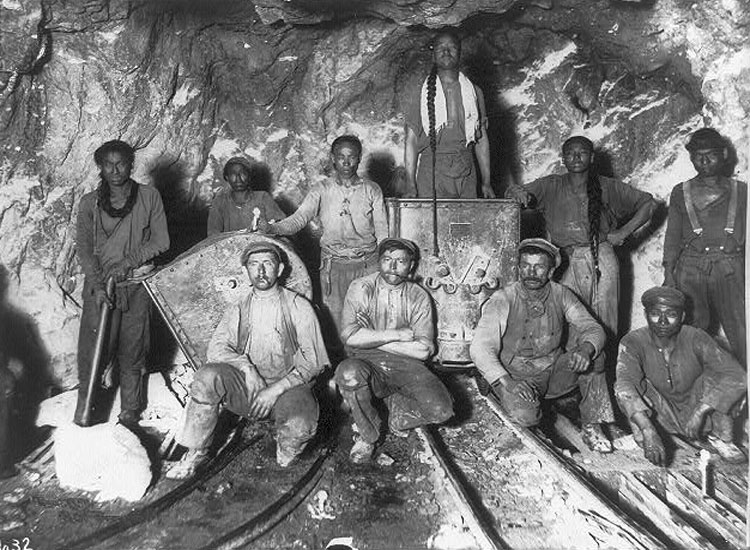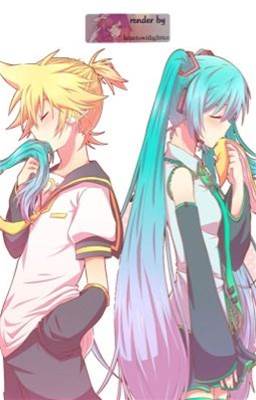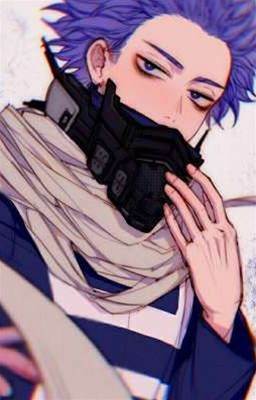《Noli Me Tank in a Mall》5.2 The Presentation (part2)
Advertisement

Are you looking for gold, friend? Look around you; anything useful to you is pure gold, pure silver!
- Mehmet Murat ildan
-x-
“Now, some of you might object ‘But wait, Don Crisostomo - didn’t you just inherit that wealth? What gives you the audacity to lecture about such things?’ and my reply is that ‘I was already a millionaire before I set foot again on these shores’.
“But before we get into that, first we must consider – what is [Wealth]?
Click. The screen shows a port with a dreadnought docked amongst trade ships.
“And how does it transform into Power? Having riches alone does not make you powerful – you can be robbed, you can be conspired against. The more you amass your fortunes, the greater a temptation you present yourself to thieves.
“My answer is – wealth is not anything as convenient as gold or silver. Wealth is [having access to resources].
Click. The screen shifts back into the world map.
“It is not lightly that I say that Spain stands on two legs – Cuba and the Philippines. They produce sugar, tobacco, and other basic supplies. But beyond that, what else do they represent?
“Look at the map. One in America. Another in Asia. They represent access to the resources of the Americas and Asia. It is not lightly that I say that these are the two legs of the Spanish Empire.
“First, Cuba – and all the wealth of North America and resources of South America. In many ways, Cuba is the much more favored child if simply because of its proximity to Europe across the Atlantic. Wealth flows to Spain to transform into battleships and other weapons of imperial dignity.
“Second, the Philippines, and all the potential markets of Asia. While its distance means Mother Spain benefits less from our trade routes, resources in Asia cannot be found anywhere else in the world. Spices, rubber, fruits, metals of strategic import - such things. The Philippines is literally at the crossroads of various colonial economic pursuits, which we have not profited from as much as we ought due to our focus on agrarian products.”
Click. The screen turns into a painting of a dried-out farm.
“Let’s take a parable of the starving man in a famine. A man would be a fool to give up his last potato for a gold nugget the size of a fist. Not the least because he would die without anything to eat, but possession of hard wealth becomes his problem – now he has to worry about being robbed, and desperately looking for anything else he could buy with that gold.
“At the same time, that gold nugget retains value because it represents the ability to exchange things for food and other supplies in towns that aren’t suffering a food shortage.
“What has changed is the relative value of consumable goods - foodstock - compared to exchange units – gold and silver. We use currency because they’re relatively inelastic compared to commodities. One can have confidence that having Wealth means having resource units that won’t drastically change in value through different times.”
Click. The screen changes to a photograph of miners standing in line trying to cross a bridge during the California Gold Rush.
“All right. So having gold actually is having wealth. So much talk for something so obvious, right? Right?”
I wave my hand, throwing its shadow onto the screen. “So here’s the question – why aren’t owners of gold mines the richest people in the world, then?”
Click. The screen changes to portraits of John D. Rockefeller, Andrew Carnegie and Nathan Meyer Rothschild.
Advertisement
“The wealthiest people outside of high nobility own businesses, banks, and deal in consumables. No, the actual business of gold mining is a dirty and awkward industry.”
Click. A shot of dark-skinned women panning gold from a creek.
“This sort of pitiful hard-scrabble prospecting will never make anyone wealthy.”
Click. Now a picture of a South African gold mine, with tunnels and mine carts and dusty men staring at the camera.
“Deep gold mining is a dangerous activity, and any owner of a gold mine has to deal with an unmotivated labor, inconvenient locations, and having to crush, sift, and refine loose rock to extract the thin veins of treasure within.”
Click. A photograph of the chemical baths that gold-containing ore must go through.
“Getting gold from ore requires boiling off ore through incredibly deadly chemicals like mercury and cyanide. Not only do miners have to risk their lives, but you must spend to obtain and contain such dangerous substances. Large scale gold mining requires a large amount of capital investment and expertise. And often, fatalities. And armed guards.”
Click. A picture of various currency.
“Gold mining is a terrible way to achieve wealth. It is better to sell something for one peso one thousand times instead of get a thousand pesos after much time and hardship. Rockefeller is wealthy because oil is something everybody needs. Navies need oil.
“Precious metals are scarce, and because of that a currency backed 1:1 by metals cannot move fast enough to deal with the massive sums of wealth being generated.
“You acquire wealth via providing others [access to resources], any currency metals are merely a stepping stone towards true richness. Millions are not moved by gold, but by paper.”
Click. A photo of a precarious Philippine mountain road and an unhappy-looking pony carrying buckets of rubble with a young boy as its handler.
“People have been trying to make new gold mines here in the Philippines for ages now. Poor locations, poor roads, lazy workers, bandits, cheaters and fakers - they have spent almost a million pesos in futility, and no amount of capital is going to get them anywhere.”
Click. A photo of a Roman aqueduct above a backdrop of farmland.
“Hence the ancient truism – the best source of wealth is simply the ownership of land. Landowners are respected because they have a stake in the security of the townships and the rule of law around them.
“But to be massively, staggeringly rich, you can’t just own land. Money should making you even more money. To be wealthy enough to be notable on the national level, it is not enough to merely cater to demand – you must create it. You must be one with it.”
Click. Click. Click.
More shots of roman architecture. Roads. And the white cliffs of Pozzuoli at Naples, Italy.
“Here’s another strange question: What is the secret that made Roman concrete so good? Thousands of years later, and they’re binding and strong as ever. They’re not just waterproof, but even seawater-proof!”
Click. The screen changes to the distinctive cone of Mayon Volcano.
“VOLCANIC ASH!” I slapped the white cloth of the projection screen with a roar.
Click. The picture goes back to cliffs.
“The Romans took volcanic ash from around Pozzuoli in Naples, Italy, and their resulting mixture is so good that even two thousand years later it is known as Pozzolana! Cement might not seem as exciting as gold and silver, BUT IT BUILDS NATIONS!
The very reaction of normally non-binding materials that react chemically with calcium hydroxide and water to form solid cementitious compound was also known as the pozzolan reaction and the capacity to do so measured by their pozzolanic activity.
Advertisement
“And what do we have? Filipinas! Sugar! Cocoa! Coconuts! Tobacco! Pineapples! Mango! AND VOLCANOOOOEEEES!”
Click. The image changes to that of the Home Insurance Building in Chicago.
I introduced the building and explained “Designed by William Le Baron Jenney in 1884 and completed the next year, this building standing ten stories tall is the first of a new type of building that will scrape the skies. What makes it notable is that is supported by structural steel frame and reinforced concrete instead of stone and brick.
“As you know, the problem with stone and brick is that they not only have to support the weight of the structure but also their own weight – hence why walls must be much much thicker on the bottom and the upper portions arched and buttressed. That sort of arrangement is great for airy and imposing cathedrals, but not as much when you want to use every bit of that space.
“Concrete is the wonder material that makes modern sustainable cities possible. Instead of sprawling out and swallowing the countryside, build UP so that people don’t need to clog the streets so much. Offices and apartment homes in such buildings command a great view and an amazing way for land owners to maximize the value of their land by having many overlapping renters paying every month.
“As cities grow, demand spikes, and rent increases. So goes sure-fire investment in real estate achieving growth for literally nothing but sitting around.
“Concrete makes construction faster. Stronger. Cheaper. And as far as architectural beauty is concerned, while brick and stone have their charms and warmth, there’s really nothing that prevents having an outer façade of such materials while the insides are made of lighter and more adaptable materials. The liquidity of concrete means it can be shaped into whatever artistic forms you desire.”
Click. An etching of a road made of concrete.
“Concrete as a road material has many advantages over cobblestones and crushed sediments, not the least of which is that it is much easier to apply and lay out over vast distances. It means roads that never turn into bogs of impassable mud and slush every rainy season. There is no need to mention the vast economic advantages this brings – not just between towns and cities, but the graceful expansion of a town into a city as the years go by.”
Click. An illustration of a coastal battery blockhouse, a cutaway showing how its internals were made of a mesh of steel girders and rebars and solid concrete.
“Here is where the waterproof nature of pozzolana cement is most valuable. Self-hiding guns are open topped and vulnerable. They were fine fifty years ago, but an armored cruiser that uses turrets and thick armor designed against their own heavy guns can just send down a volley and silence them. Brick backed by rammed earth no longer provide adequate protection against high explosive shells.
“Concrete that is waterproof and resistant to seawater corrosion is the literal foundation of ANY shore-based defenses in the coming century. Pozolanna Pacifica is a thing that hardens even when underwater.”
Click. The view shifted to the flat plains beneath the Zambales mountain range. “Oh and what do we happen to have? Volcanoes that have left deposits of ash through antiquity. We have limestone. We have chalk. We can make cement.”
Click. A photo of a building under construction, its steel framework visible.
I raise my fist and declare “We can make POZOLANNA FILIPINA BEFORE ANYONE ELSE GETS WIND OF THIS IDEA AND MAKE OUR VERSION WORLD FAMOUS!”
Click. A riverbed with boulders and weathered cliffsides.
“Volcanoes erupting are a frightening time, but this changes everything! Ashfall kills and chokes the land and ruins farmland with lahar until enough time passes that the ash hardens into the most fertile of soils. But ash! That which we thought had no value except as a nuisance becomes a moneymaker!
“Odd as it may sound, but many of what would otherwise be worthless barren and rocky soil could suddenly become much more valuable after surveying. Concrete making requires only open pit excavation, grinding and heating, on flat land often next to rivers. It is hard labor and transporting the product in large quantities can be inconvenient to arrange - but it is safe. Simple and safe.
“You could poke around in the mountains looking for seams of gold like a retard… or you could take your cut of that sweet sweet volcanic silver.”
Click. A photograph of the aftermath of a dispute in the Wild West, with one man down on the ground presumed dead and the other with the pistol still up.
“And unlike trying out gold mining, when you succeed at it – who would want to steal cement?! Bandits aren’t going to jump you for bags of powder, these things are required for construction, and construction companies aren’t going to buy penny-ante amounts. People who need to build things would just buy from retailers who can keep their cement dry and out of the rain.
“It is an imperishable good! It will be fine to use ten, twenty years from when it was first made. It is an item that is under constant demand, but in lean times lose none of its value. Throw it into a boat, and it will do as well anywhere in the globe.”
Click. A photograph of New York’s rising skyline.
“And who would want high quality concrete? Everybody that wants to build anything. It is a strategic resource. As world population increases, so does the need for construction materials. Other commodities are consumables. But this is one that directly strengthens the nation!”
Click. The image changes back to the map of the Philippines with arrows going out.
“Sugar. Cocoa. Tobacco. Coconuts. Copra. Concrete.” I slap my hand over the screen again, my arm bulging out the projected image. “Wealth, for a nation, is [EXPORTS].
“I tell you this with the highest degree of confidence – the first person who sets up a cement factory in this Philippines will never ever run out of money.”
Click.
The screen shows the words: NOW WHO SHALL BE THE CONCRETE KING?
“I await the arrival of the monarch of construction.”
-x-
Click. The screen showed white, which lit up the room well enough. Crispin approaches with a glass of water. A deep and almost hallowed silence has descended upon the hall.
I smile at the people and say “A brief Intermission, if you do not mind, good sirs.”
“Sweet baby Jesus,” someone murmurs with an awestruck whistle. “He was actually serious…”
“Don Crisostomo!” someone shouts, raising his hand and waving frantically. “Are you looking for partners to set up a concrete factory?! Are you going to set up a company?”
“Could this work…?” others were whispering in groups. “It… sounds legitimate. It can’t be that simple, can it? Milyones...”
“How much is the buy-in?!”
I shake my head and raise my palm up. “Leave your questions for later, my friends. No. This is not my plan to make you all filthy filthy rich. Rather, not THE Plan. There is more. Many more. Let none find us wanting.”
“… Don Crisostomo!”
“Shush, man!” another shadowy figure pulls him down. “Let the man collect his thoughts.”
I heave for breath after talking loudly for so long and slowly sip at the glass of cool water. From my peripheral vision, I could see the governor-general Terrero y Perinat and the ethnographer John Foreman animatedly speaking to each other. Well such an endeavor as this would require the purchase of steam engines, so his invitation there now abruptly makes sense. And the military implications I'd just hinted at-!
I lean against the wall, close my eyes and zone out for a bit ignoring all the sundry noise of all their talks.
Then, after a few more minutes, I step back up to the front of the room again.
-x-
Click.
The screen now shows – PART TWO OF THE WEALTH CREATION PLAN: THE GREAT FILIPINO WORKER.
“Countrymen,” I say with teeth bared wide in a feral grin. “Let us speak about blue collar invasion.”
-x-
Advertisement
- In Serial16 Chapters

VocaHigh - LenxMiku
Warning: BEWARE OF CRINGE WORTHY WRITING AHEAD OF YOU. READ AT YOUR OWN RISK....LOL.Vocaloids going to high school. Typical story, huh? Anyway, Miku and MIkuo apply for VocaHigh. On the way, she reunites with her old buddies from middle school. Of course, she falls in love at first sight with a late student. They don't know about each other's feelings, as always, but they are hoping to confess sooner or later. Pairings- LenxMikuRinxMikuoMeikoxKaitoLukaxGakupoATTENTION. READ THIS PARAGRAPH BELOW IF YOU WANT TO.I know. Bad summary, huh? I tried making it as interesting as possible. This is my first story I've ever written on Wattpad or even on fanfiction. Oh yeah. If you have time, try checking out this website called Fanfiction. If you already haven't. I also want to give a shout out to an author that I personally like on Fanfiction. It's solitaryloner. She writes amazing and detailed stories that you could read about Len and Miku. Of course she's busy so she probably doesn't update that frequently, but please be patient with her.
8 107 - In Serial22 Chapters

Music In My Heart - Dreamwastaken
A Minecraft man that speedruns everything falls for a girl that does everything in steps.Anja Moore's last-minute decision to move to Florida results in her falling for a man the opposite of her style.Content Warning: Smut{Dream x OC}Started 06/09/2021Completed 08/03/2021
8 72 - In Serial50 Chapters

For Your Eyes Only
He was the boy that no one noticed. He was quiet, bland to the naked eye, a total wallflower who sat on the sidelines and lacked in eye contact with those around him though he had the type of eyes that made you feel like you could drown. He tried his best to blend into the background, but what he didn't know was that he was the only one that caught my eye. He was the most intriguing person I had ever laid eyes on even though he couldn't see me. He couldn't see anything.
8 200 - In Serial45 Chapters

Once Bitten
(18+) *Unedited*It has been seven years since the vampires took over. I remembered the day like it was just yesterday. The sirens. The deaths. The fear instilled upon every living human. And now I was being used as a blood bag for these beasts who took my life and threw it out of proportion. *****This is a reverse harem story. (18+ for strong language, graphic depictions of violence, and graphic sexual scenes)
8 298 - In Serial59 Chapters

vinnie hacker - do i love you yet? (INCLUDES SMUT!)
this is just vinnie smut for one of my best friends because we're obsessed (more her than me) so this is for you ansh 💗😣vinnie smut story, but with a plot too to follow along with ;).
8 140 - In Serial17 Chapters

Mindlessly Wandering (Shinso x Reader)
What happens when a girl who has been hurt her entire life gets adopted by a pro hero and then meets her soul mate? Will she be saved by her hero? Or will she end up hurt again? Let's find out together!ALSO THIS STORY HAS A LOT OF ABUSE AND DEPRESSIVE TOPICS SO READ AT YOUR OWN RISKThis story was a way for me to vent my problems and ways that I feel, so it gets dark a lot.
8 147







 Prev Chap
Prev Chap Next Chap
Next Chap Chap List
Chap List
 Boy
Boy Girl
Girl
